This was the premise at the peach convention organised by CREA-FRU on 23rd July 2016 on the occasion of the annual Mostra Pomologica.
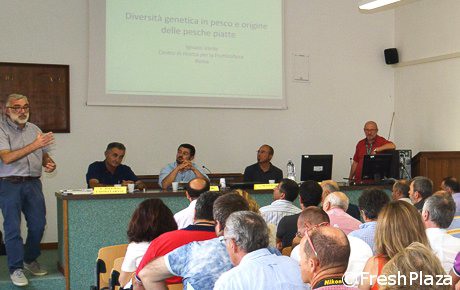
The speakers' table, from left: Davide Neri, Ignasi Iglesias Castellarnau, Marco Eleuteri, Marcello Cutuli and Ignazio Verde.
CRA-FRU's director Davide Neri introduced the researchers, entrepreneurs and speakers as well as an important Iranian delegation made up of representatives of the Republic of Iran at the United Nations in Rome guided by ambassador Majid Dehghan Shoar.

The Iranian ambassador with Davide Neri.
The flat peach gene and its diffusion
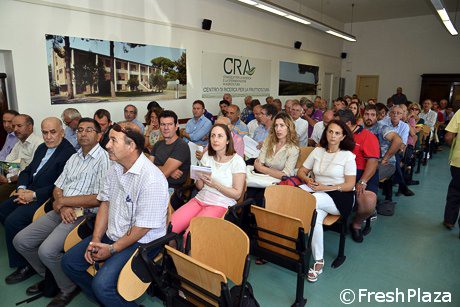
The audience.
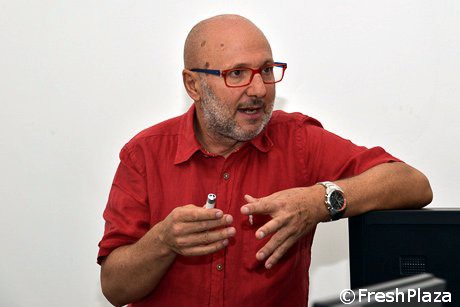
Ignazio Verde (in the photo above) explains that "the fact that both Chinese and Sicilian peaches are part of the same cluster may be due to the visits of Italian missionaries in China in 1600. In addition, as there are also Spanish types within the same cultivar, it may be due to the peaches brought back by the Spaniards from China."
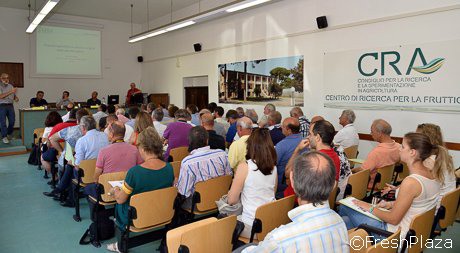
The importance of genetic improvement
Up until the 1980s, i.e. when Stark Saturn peaches affirmed themselves on the market, the cultivation of traditional flat peaches (such as Sicilian Saturn peaches) was only possible in limited areas because trees were not very resistant to low temperatures. In addition, fruit was too delicate and small and its shelf-life was too short to be sold in markets that were farther away.
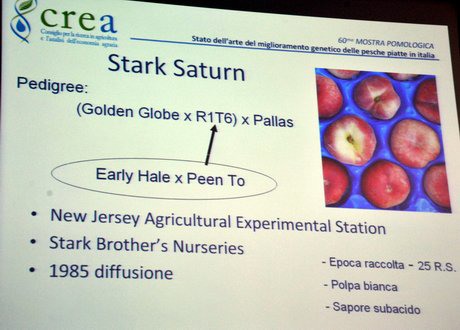
CREA-FRU researcher Marcello Cutulli (in the photo below) stressed that it was "the arrival of Stark Saturn, developed by the New Jersey Agricultural Experimental Station, that changed everything."
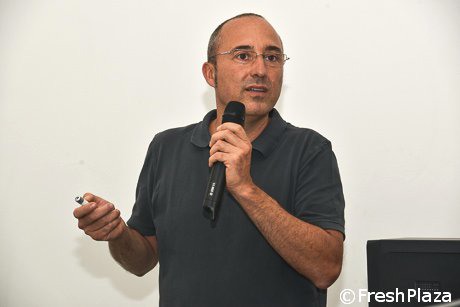
This new variety had a better resistance to cold temperatures as well as a better quality. The peel was thinner, the flesh tastier and it had a longer shelf-life.
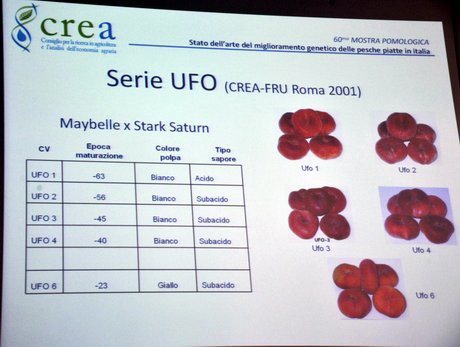
These characteristics led the Istituto Sperimentale di Frutticoltura di Roma to start its own genetic improvement programme, which improved the quality of the fruit and extended the harvesting calendar. The new variety group was called "UFO" and today flat peaches are harvested between May and October.
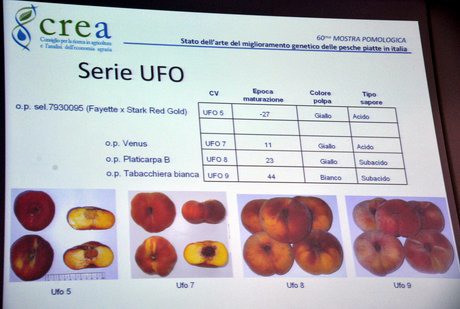
Eleuteri attended the convention as a speaker and as a representative of the first Italian company (agricola Eleuteri) to have invested in the cultivation and promotion of new flat peach varieties.

Marco Eleuteri
Research carries on, and CREA-FRU introduced three new selections (Livia, Cornelia and Lucilia) that presented a constant behaviour over the years compared to 424 selections and over 2 thousand seedlings.
The next breeding goals in this segments are - "stony hard" flat peaches (very low ethylene emissions). The flesh is red, they are rustic, and present similar organoleptic qualities of traditional Saturn peaches.
What about Spain?
Spain is the leading country for what concerns the areas dedicated to flat peach (paraguayos) and nectarine (platerinas) cultivation and for their commercialisation. But what about the history and evolution of this country and its future challenges?
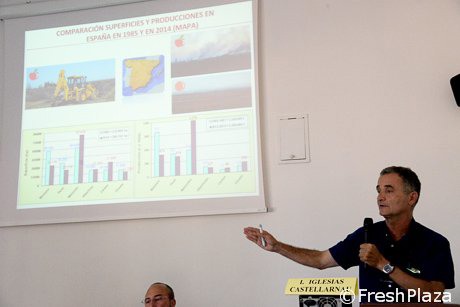
Professor Ignasi Iglesias Castellarnau from the IRTA research institute (Catalonia - Spagin) made a complete analysis of the matter.










